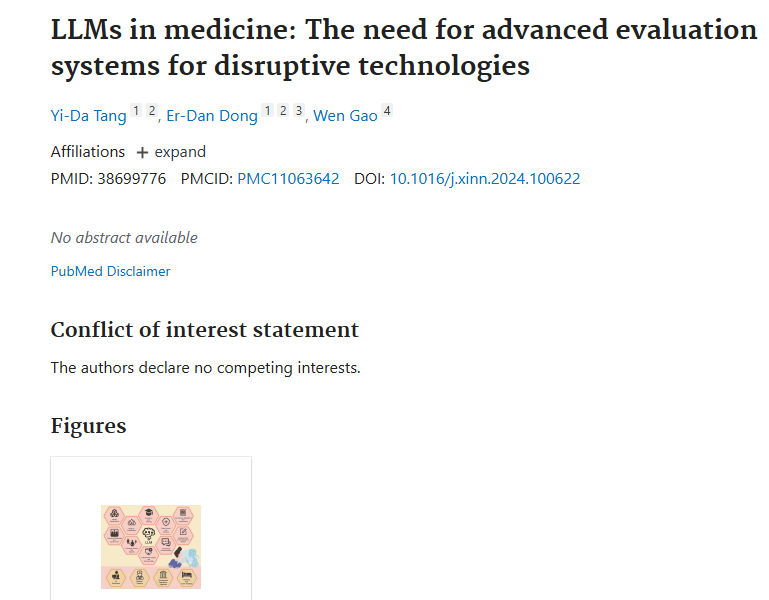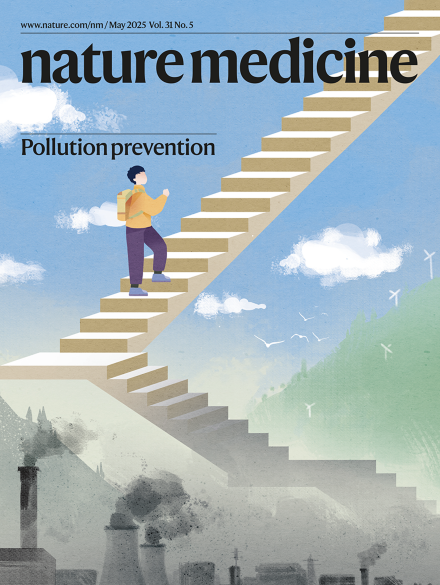
Hospital admissions attributable to reduced air pollution due to clean-air policies in China
Background: Air pollution is a major environmental risk. China’s Air Pollution Prevention and Control Action Plan (APPCAP) in 2013 was a significant step to tackle severe air pollution. However, detailed assessments of the health benefits of air quality improvement across regions and different pollutants were lacking.
Findings: The study analyzed hospitalization records from 292 Chinese cities from 2013 to 2017. It found that PM2.5 and black carbon (BC) concentrations decreased by 28.61% and 20.35%, respectively. This reduction led to a significant drop in hospitalization rates for various diseases, with depression and cardiovascular diseases showing notable declines. Black carbon was identified as a key contributor to the health benefits.
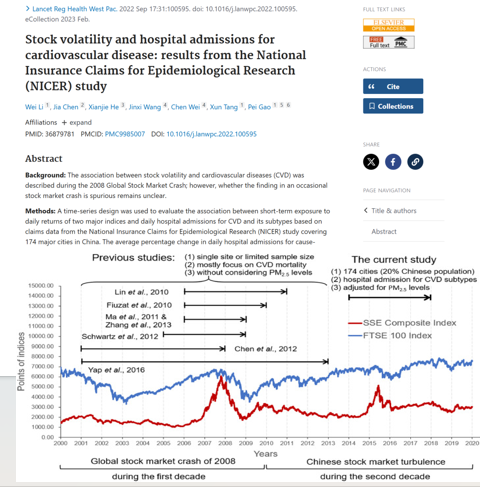
Stock volatility and hospital admissions for cardiovascular disease: results from the National Insurance Claims for Epidemiological Research (NICER) study
Background: The association between stock volatility and cardiovascular diseases (CVD) was described during the 2008 Global Stock Market Crash; however, whether the finding in an occasional stock market crash is spurious remains unclear.
Findings: Totally 8,234,164 hospital admissions for CVD were recorded during 2014-2017. Points of the Shanghai closing indices ranged from 1991·3 to 5166·4. A U-shaped association was observed between daily index returns and CVD admissions. Changes of 1% in daily returns of the Shanghai index corresponded to 1·28%(95%CI: 1·04%-1·53%), 1·25%(0·99%-1·51%), 1·42%(1·13%-1·72%), and 1·14%(0·39%-1·89%) increases in hospital admissions for total CVD, ischaemic heart disease, stroke, or heart failure on the same day, respectively. Similar results were observed for the Shenzhen index.
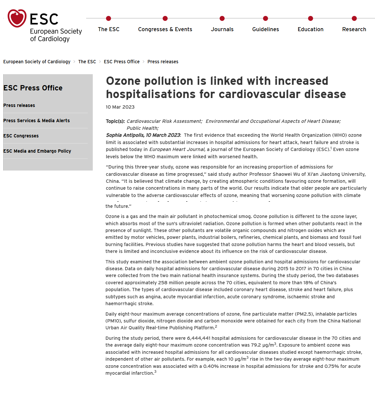
Ozone pollution and hospital admissions for cardiovascular events
Aims: The available literature on morbidity risk of cardiovascular diseases associated with ambient ozone pollution is still limited. This study examined the potential acute effects of exposure to ambient ozone pollution on hospital admissions of cardiovascular events in China.
Conclusion: Ambient ozone was associated with increased hospital admission risk for cardiovascular events. Greater admission risks for cardiovascular events were observed under high ozone pollution days. These results provide evidence for the harmful cardiovascular effects of ambient ozone and call for special attention on the control of high ozone pollution.
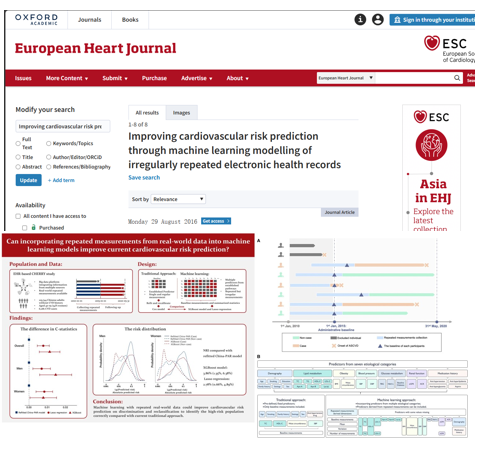
Improving cardiovascular risk prediction through machine learning modelling of irregularly repeated electronic health records
Aims: Existing electronic health records (EHRs) often consist of abundant but irregular longitudinal measurements of risk factors. In this study, we aim to leverage such data to improve the risk prediction of atherosclerotic cardiovascular disease (ASCVD) by applying machine learning (ML) algorithms, which can allow automatic screening of the population.
Conclusion: Machine learning algorithms with irregular, repeated real-world data could improve cardiovascular risk prediction. They demonstrated significantly better performance for reclassification to identify the high-risk population correctly.
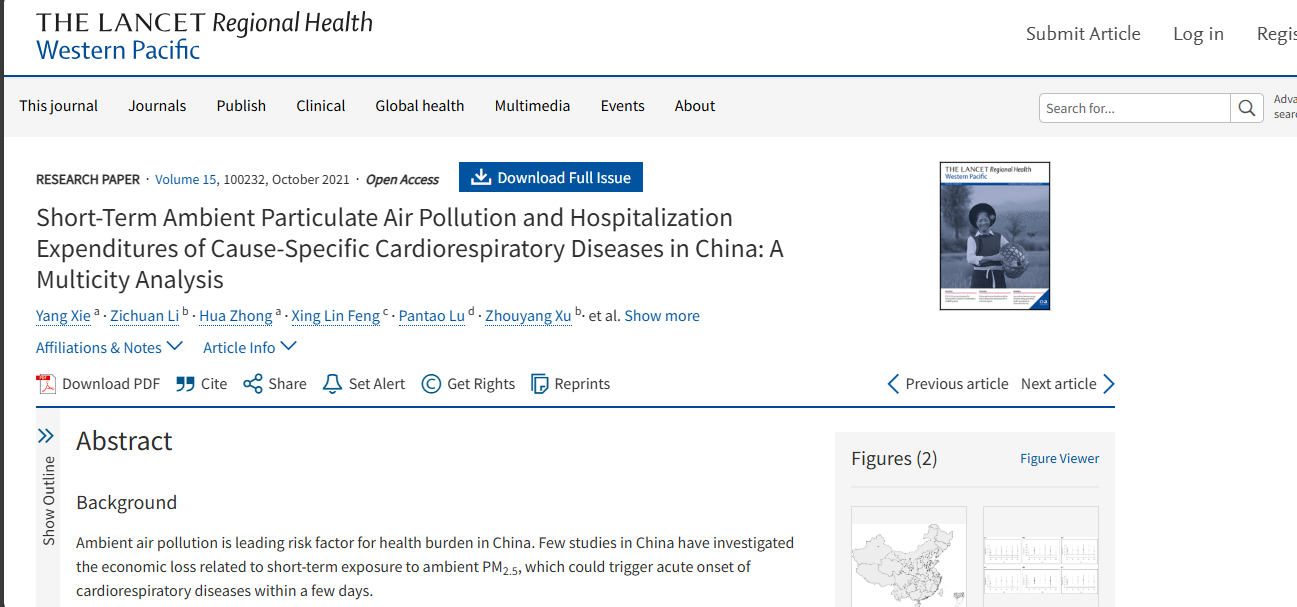
Short-Term Ambient Particulate Air Pollution and Hospitalization Expenditures of Cause-Specific Cardiorespiratory Diseases in China: A Multicity Analysis
Background: Ambient air pollution is leading risk factor for health burden in China. Few studies in China have investigated the economic loss related to short-term exposure to ambient PM2.5, which could trigger acute onset of cardiorespiratory diseases within a few days.
Findings: Based on the time-series analysis using daily hospitalization data, 28,560 LRI cases, 54,600 CHD cases, and 23,989 stroke cases are attributable to ambient PM2.5 in the 74 cities during the study period, and the related attributable expenses are 220 million CNY (US$ 32.9 million) for LRI, 458 million CNY (US$ 68.5 million) for CHD, and 410 million CNY (US$ 65.8 million) for stroke, respectively. These attributable numbers account for 1.45% to 2.05% of total hospital admissions and 1.10% to 1.51% of total expenses for the three diseases during 2016-2017, respectively. The attributable numbers for the three cause-specific cardiorespiratory diseases would increase to 362,007 hospital admission cases and 3.68 billion CNY expenses ($US550 million) in the entire urban employee population (299 million) in China during 2016-2017, and the related direct economic loss of absence from work would be 798 million CNY (US$ 119.3 million).
